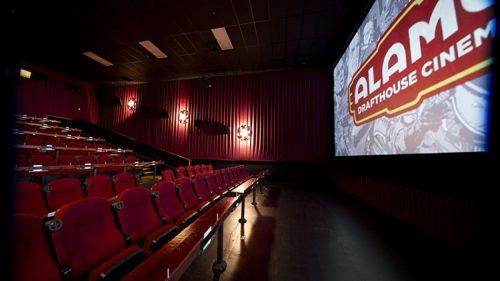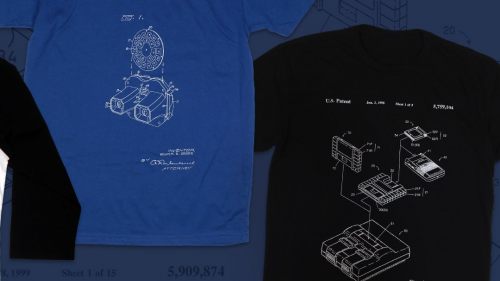Community, Crumpets And Crime: An Ealing Studios Primer
Ealing Studios, the modest and self-sufficient film production company located at Ealing Green in West London, made films that, for a time in the forties and fifties, came to define not only British cinema but a fundamental part of British identity. Studio head Michael Balcon deliberately set out to make movies that represented something intrinsically and culturally British. Ealing pictures strove to stand for continuity and decency, celebrating community and representing an idealized, indomitable Britain. Mention of Ealing Studios was meant to evoke the smell of buttered crumpets or the taste of a warm draught. The mythical Britain of Ealing Studios is the same Britain evoked by The Kinks' "Village Green Preservation Society": "Preserving the old ways from being abused/Protecting the new ways for me and for you." God save the Village Green.
After several years spent managing both Gainsborough and Gaumont-British Pictures, as well as a miserable year and a half running the British branch of MGM, Michael Balcon took charge of Ealing Studios in 1938. He recruited a brilliant team of creative craftsmen who came to be known as Mr. Balcon's "Young Gentlemen" -- among them directors Robert Hamer and Alexander Mackendrick, screenwriter T.E.B. Clarke and cinematographer Douglas Slocombe -- and began to build a studio identity in the tradition of Hollywood's golden age. Much like how MGM's "boy genius" Irving Thalberg controlled production to foster ideas that were particular to him, producing films that were individually unique yet consistent in tone, Balcon too wanted to create this sort of cohesive ideology and integrity of purpose for his studio. Films weren't made at Ealing, but by Ealing.
The ideology that Balcon espoused was based in a particular kind of "realism" that he saw as being in opposition to "tinsel." Ealing films avoided excess, dealing in moderation and understatement. Humor was valued as a way to alleviate the hardships of post-war daily life. Though influenced by the British documentary movement and filmmakers like John Grierson and Humphrey Jennings, Balcon disliked "naturalism" and tried to avoid its more radical and left-wing associations which he perceived to be dangerous. Social contradictions and class conflicts were ignored or smoothed over by gentle, well-meaning humor and a delight in mild eccentricity.
Ealing films do, however, concern themselves with communities; how they function and how they carry on. Ealing itself was the "Studio with the Team Spirit," driven with the fervent conviction of a family business. In his definitive book on the studio, Ealing Studios: A Movie Book, film historian Charles Barr writes, "In a business notorious for size and instability, for a rapid turnover of money, ideas and people, Ealing succeeded in keeping itself small and stable." He positions a very early Ealing comedy, Cheer Boys Cheer from 1939, as the most archetypal and autobiographical of all their films. In it, a big brewery tries to take over a small competitor, a family firm celebrating its 150th anniversary. The offer is proudly refused, so the big boss's son goes undercover to infiltrate the small brewery and sabotage it from within. In the end, however, he is won over by the family brewery, saves the company from ruin and marries the daughter of the family. Everyone comes together at the wedding banquet to drink to the couple's health in a specially brewed draught.
Barr breaks it down, "To make this really Ealing, lay on the contrasts. The brewery names: Ironside against Greenleaf. Grim offices and black limousines against country lanes, ivy-covered cottages, horses, bicycles. Autocratic rule against the benevolent paternalism of a grey-haired old man who collects Toby Jugs. The beer itself: quantity against quality, machines against craftsmanship. The people and their manners: very harsh, very gentle. Small is beautiful."
The irony of Ealing Studios -- of its historical intentions and of its legacy in the public imagination -- is that when you actually go back and watch the films, so many of them are uncomfortable operating inside this proscribed ideological framework, pushing and pulling at their seams, undermining it all with deliberate acts of subversion. While many Ealing comedies are rather wholesome and harmless, suppressing complex and problematic realities, other Ealing films such as Whisky Galore and Kind Hearts And Coronets boldly restore suppressed themes of class and sex. The Ladykillers is a bloody-minded story of cruelly incompetent robbers. The Man In The White Suit is a scabrously political film about a chemist who invents a perfect fabric that threatens to destroy the economy. Kind Hearts, one of the most viciously black comedies ever made, is a callous and amoral laff riot about a calculating serial killer.
And though it's almost impossible to think about Ealing Studios without thinking of their comedies, comedies only represent about a third of their work. From white-knuckle Nazi invasion films (Went The Day Well?) to dark and mysterious horror (Dead Of Night) to poetic realist drama (It Always Rains On Sunday) to gritty police procedurals (The Blue Lamp), Ealing produced many of the finest British films ever made. Watching them now though, it's not so much their "Britishness" that defines them but the sheer quality in their craft. If you have never seen an Ealing film, start with one of these comedies and discover a mythical Britain brought to life and then cut to ribbons.
HUE & CRY (1947, Charles Chrichton)
The story of a group of East End kids who discover that a gang of criminals is using a comic book to send coded messages about their secret plans, Hue & Cry is the first true Ealing comedy of their golden age. The movie has an adventurous, Boy's Own ripping yarn quality, but the most striking thing about it is its use of real locations in London's bombed-out East End. These post-Battle of London, rubble-strewn streets are the background for the film's unforgettable finale in which, ignored by all authority figures, the kids take matters into their own hands and organize hundreds of other kids from across the city to convene on the villains. Just as Hammer became synonymous with horror after the wild success of Horror Of Dracula in 1958, Hue & Cry's impressive box office receipts meant that this style of comedy would go on to dominate much of the studio's production efforts for the following decade.
PASSPORT TO PIMLICO (1949, Henry Cornelius)
Residents of the Pimlico district of London discover that, due to some arcane treaties, they still legally belong to Burgundy. To free themselves from the rationing restrictions of post-war austerity, the people of Pimlico declare it to be an independent state. This comedy about a small community of ordinary folks involved in extraordinary events is archetypal Ealing. It's laced with a nostalgic yearning for the social unity of the war years and, despite their resistance and defiance, the "Burgundians" never forget where they’re really from. "We always were English and we always will be English, and it's just because we are English that we're sticking up for our right to be Burgundian!" You can't get more Ealing than that.
KIND HEARTS AND CORONETS (1949, Robert Hamer)
You can't get less Ealing than this. Dennis Price is brilliant as an embittered lower-class commoner who is unwaveringly determined to avenge his mother's unjust disinheritance by claiming her family's fortune and titles for himself. Unfortunately, he has to first murder his way through eight of her relatives. Fortunately, all eight of them are played to perfection by a chameleonic Alec Guinness, including an elderly aunt. Kind Hearts is cool, ironic and witty. And very, very dark. This film lies furthest apart from the rest listed here, owing more to Chaplin’s Monsieur Verdoux than any other Ealing film. But it can easily stand next to that masterpiece or even Dr. Strangelove as one of the very best black comedies of all time.
THE LAVENDER HILL MOB (1951, Charles Chrichton)
Alec Guinness has concocted the perfect crime: smuggling a million pounds in gold bullion stolen from the Bank of England into France in the form of miniature Eiffel Towers. Abetted by a flawless script and a wonderful supporting cast, this film is as much a suspenseful thriller as it is a witty comedy. Most thrilling of all however is the brief before-she-was-famous appearance by Audrey Hepburn. In the words of Telegraph critic Sukhdev Sandhu, “She’s a glimmering diamond amid the unvacuumed carpets of the Ealing universe.”
THE MAN IN THE WHITE SUIIT (1951, Alexander Mackendrick)
If you only know Ealing’s comedic good-luck-charm Alec Guinness as Obi Wan Kenobi, watching the virtuosic range that he exhibits across these films is staggering. His comedic skills can be put to almost any use. Here he plays a Promethean antihero chemist who develops an artificial fiber that’s indestructible and unsoilable. The economic implications of such an invention are disastrous and he soon has to content with angry personifications of Capital and Labor, both trying to quash his scientific dreams in favor of planned obsolescence.
THE TITFIELD THUNDERBOLT (1953, Charles Chrichton)
This is another of the wistful, yearning, backwards-looking comedies that really project the fabled Ealing feeling. When a domineering and villainous bus company threatens to close the Titfield rail line, the local villagers enact a plan to take over operations of the train themselves. Celebrating eccentric, provincial communities and their love of rural railways, Titfield Thunderbolt is the mildest and most parochial of these comedies, but it’s still witty and warm.
THE MAGGIE (1954, Alexander Mackendrick)
The devious captain of a Scottish ‘puffer’ boat steals valuable cargo from an American big shot and delivers it himself, standing up for the little guy against heartless forces of progress. Although similar to Thunderbolt in that it deals with sentimental efforts to preserve ageing vehicles, The Maggie is more complex and subversive with a bitter and black heart that prevents any true sympathy with the protagonists - and it’s all the better for it.
THE LADYKILLERS (1955, Alexander Mackendrick)
The last truly great comedy of the Ealing cycle is probably the most famous, and with good reason. The pitch black humor that it mines from the story of a motley crew of crooks using the home of a dotty old lady, the unforgettable Mrs. Wilberforce, as the base of operations for an ill-fated heist remains sharp and visceral. Alec Guinness again disappears into his character, a gothic and twisted Professor orchestrating the operation, but the performance is enriched by everyone around him, including Herbert Lom as a trigger-happy professional gangster and Peter Sellers as a scrappy corner boy. The strength of the film is in the way that the characters collide and the sense of conflict and contradiction that permeates everything in it. It fits the Ealing mold by exploring conformity and community, by emphasizing its ensemble cast, by filming on location and by anchoring its black comedy with a strong moral dimension. But it also strains against all those tendencies in a way that feels dangerous and uncontainable. We never feel comfortable around these characters and as their heist slowly unravels, their childishly inept behavior gets more sinister. Mixing pathos, nostalgia, slapstick and terror, the film becomes a macabre cartoon of greed and corruption. With its bizarre collision of styles and ideas, The Ladykillers is British filmmaking at its most powerful.
All of these films are available on DVD in the US.
This was originally published in the "Cheers! A Celebration of Pub Life" issue of Birth.Movies.Death. See Whisky Galore! at your neighborhood Alamo Drafthouse this month.



